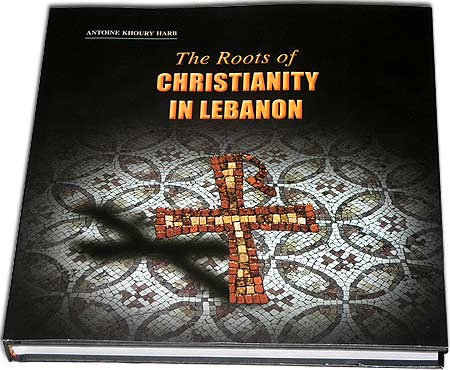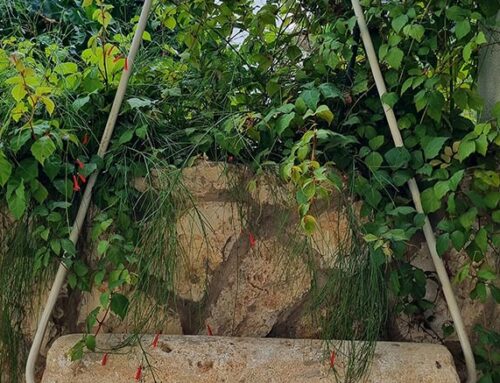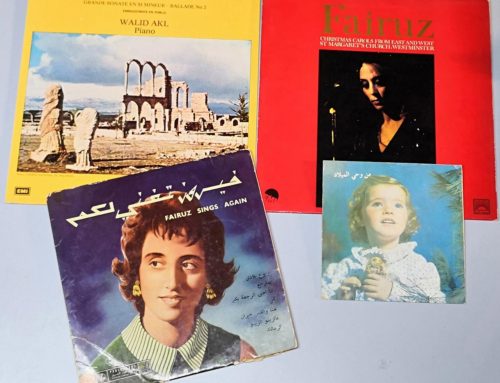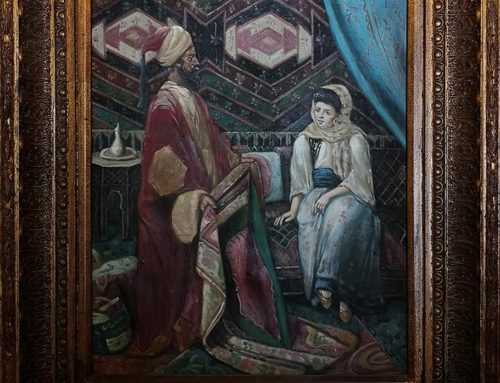Roots of Christianity in Lebanon by Dr. Antoine Emile Khoury Harb
Preface by H. E. Metropolitan George Khodr
“When you witness the unity of the archaeological remains of churches, shrines, and sanctuaries, you behold the pure Christianity residing in our past, and you trace the permanence of doctrinal unity in archaeological sites… Then, you come to the conviction that those roots have come down to earth from heaven, as though the Christian Lebanon fell on us from on high, as though God viewed it as one of His places of residence on earth.”
The uniqueness of the author lies in the fact that he is at the same time an archaeologist and a historian. Both fields have different, but complementary approaches. The past depends on knowledge of the stone and of written records.
Dr. Antoine Khoury Harb entitles his book The Roots of Christianity, but in fact, he goes far beyond these roots, and addresses Lebanon’s ancient and modern history as well.
The beauty of this work lies in the illustrations of the archaeological vestiges which add to the content and deepen your comprehension of it. The sobriety of the work is based on the sources that document both the Greek and the Latin citations, which make you live the origins and agree with most of what is said. Dr. Harb does not leave out any place that Christianity has reached without leading you to it and its past, allowing you to live through it. He also puts you, through careful scrutiny, in contact with the flow of the ages. He attracts you to the ancestors who preached the Word of Christ in this land, and often uses the names of bishops or martyrs in their original script (Latin or Greek) for more precision and recognition.
You may disagree with him regarding certain details because he has based his argument on recent ideas, but the work remains highly academic in its entirety. The author does not neglect any sanctuary or village deeply rooted in antiquity; he carries out his research with objectivity independent of any specific Christian denomination. His sole concern is the site, not the contemporaries who use the place.
His main concern is to show that Jesus of Nazareth shed His light on Lebanon during His preaching. The author mentions that Jesus entered Tyre and Sidon, whereas the Bible only mentions Christ’s passage across their borders. Furthermore, the author strongly defends the hypothesis that “Cana of Galilee” is in fact “Cana of Tyre”, and supports plausibly his opinion with much evidence, although western scholars are still hesitant with respect to this thesis. Likewise, he allots a great deal of importance to the Phoenician Triad of Baal, Ishtar, and Adon as a Phoenician predisposition for the acceptance of the Christian Trinity, although the Phoenician Triad is one of gender while there is no trace of gender in the Christian Trinity.
Was there anything in Lebanon which paved the way for Christianity? Perhaps the legend of Adon who died and rose embodies features of Christ’s suffering and resurrection, with the major difference that Jesus existed and Adon did not. Was Plato in Greece a forerunner of Christ, or was he not? The Church expressed reservations with respect to certain Platonic teachings, though a minority of Church Fathers saw that his writings embodied seeds of the Christian doctrine. The whole issue is interpretation; what one views as cohesive, another finds incoherent.
The most important characteristic of this book is that Dr. Harb does not error as he meticulously analyzes the Christian heresies and the controversies of the ecumenical and local councils, even though he is no theologian. I have rarely found nonprofessional theologians who did not misrepresent theological issues. He knows the Orthodox, Jacobite and Nestorian points of view quite well. And although one notices much disparity between the approaches of those who teach doctrine and those who teach ecclesiastical history, one finds that Dr. Harb covers both fields accurately.
Even though the work is comprehensive and covers the whole area of Lebanon, there is more emphasis on the coastal areas and the regions of the North, as these are the cradle of Lebanese Christianity; furthermore, one always finds a link with the Antiochian Church of which the Church of Lebanon is a part. It is up to the reader to look for the distinguishing features of the different regions. Perhaps the feature that best unifies the various regions is the architectural style which the author makes ample use of because it embodies the spiritual culture of the faithful and expresses their penetration of the liturgical mystery, that is to say their knowledge of God’s radiance in Christ. How you pray, and what you say in your prayer, is an indication of the nature of your faith.
The fact that Byzantine architecture is predominant, as the archaeological remains show, indicates that Antioch and Constantinople were originally united in faith, although the Monophysite doctrine prevailed in the Antiochian sphere for quite a while until the Chalcedonian doctrine finally gained the upper-hand in the Lebanese sphere, a doctrine which most of the Lebanese Christian communities adhere to today. There was absolutely no difference among us during the Middle Ages. This makes me understand that the churches had the same Byzantine architectural design before Western Christianity spread in our region. Our ancestors in the Middle Ages unanimously agreed, in more than twelve documents, that the Orthodox, the Jacobites, and the Nestorians share the same faith, although they disagreed in the verbal expressions of their doctrine. This further consolidates the validity of the title The Roots of Christianity in Lebanon.
When you witness the unity of the archaeological remains of churches, shrines, and sanctuaries, you behold the pure Christianity residing in our past, and you trace the permanence of doctrinal unity in archaeological sites. Supporting these are the clear maps that guide you to the places you can visit, and thus you stroll in those ancient cities feeling as if you were one with those who built them. Only then, you come to the conviction that those roots have come down to earth from heaven, as though the Christian Lebanon fell on us from on high, as though God viewed it as one of His places of residence on earth.
Everyone who has studied the Byzantine civilization, crystallized in our hermitages, feels that he is one with its beauty and one in theological aspirations, and that Byzantium is the daughter of Antioch, not its mother. Antioch “faces” Lebanon, which suggests that they are intimately related. Thus, the author sustains that the Gospel as both message and record, first appeared in our country and its neighborhood.
I reveal no secret if I say that Antoine Khoury Harb, whose work I am now familiar with, is a living bearer of Christ. We are not companions of the dead. We are the product of a heritage, and Antoine Khoury Harb revives this heritage in this unique book. It is a book that leaves a deep impact on you if you come to grips with its content; and if you take pride in your predecessors, it makes you feel more attached to your homeland, and leads you to the Truth dwelling in you.

Book Christianity in Lebanon
Metropolitan George Khodr
Broummana, 28 May 2007






